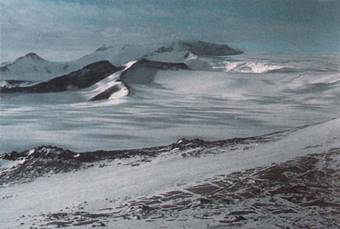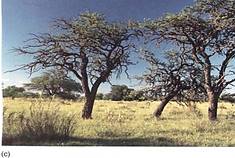

النبات

مواضيع عامة في علم النبات

الجذور - السيقان - الأوراق

النباتات الوعائية واللاوعائية

البذور (مغطاة البذور - عاريات البذور)

الطحالب

النباتات الطبية


الحيوان

مواضيع عامة في علم الحيوان

علم التشريح

التنوع الإحيائي

البايلوجيا الخلوية


الأحياء المجهرية

البكتيريا

الفطريات

الطفيليات

الفايروسات


علم الأمراض

الاورام

الامراض الوراثية

الامراض المناعية

الامراض المدارية

اضطرابات الدورة الدموية

مواضيع عامة في علم الامراض

الحشرات


التقانة الإحيائية

مواضيع عامة في التقانة الإحيائية


التقنية الحيوية المكروبية

التقنية الحيوية والميكروبات

الفعاليات الحيوية

وراثة الاحياء المجهرية

تصنيف الاحياء المجهرية

الاحياء المجهرية في الطبيعة

أيض الاجهاد

التقنية الحيوية والبيئة

التقنية الحيوية والطب

التقنية الحيوية والزراعة

التقنية الحيوية والصناعة

التقنية الحيوية والطاقة

البحار والطحالب الصغيرة

عزل البروتين

هندسة الجينات


التقنية الحياتية النانوية

مفاهيم التقنية الحيوية النانوية

التراكيب النانوية والمجاهر المستخدمة في رؤيتها

تصنيع وتخليق المواد النانوية

تطبيقات التقنية النانوية والحيوية النانوية

الرقائق والمتحسسات الحيوية

المصفوفات المجهرية وحاسوب الدنا

اللقاحات

البيئة والتلوث


علم الأجنة

اعضاء التكاثر وتشكل الاعراس

الاخصاب

التشطر

العصيبة وتشكل الجسيدات

تشكل اللواحق الجنينية

تكون المعيدة وظهور الطبقات الجنينية

مقدمة لعلم الاجنة


الأحياء الجزيئي

مواضيع عامة في الاحياء الجزيئي


علم وظائف الأعضاء


الغدد

مواضيع عامة في الغدد

الغدد الصم و هرموناتها

الجسم تحت السريري

الغدة النخامية

الغدة الكظرية

الغدة التناسلية

الغدة الدرقية والجار الدرقية

الغدة البنكرياسية

الغدة الصنوبرية

مواضيع عامة في علم وظائف الاعضاء

الخلية الحيوانية

الجهاز العصبي

أعضاء الحس

الجهاز العضلي

السوائل الجسمية

الجهاز الدوري والليمف

الجهاز التنفسي

الجهاز الهضمي

الجهاز البولي


المضادات الميكروبية

مواضيع عامة في المضادات الميكروبية

مضادات البكتيريا

مضادات الفطريات

مضادات الطفيليات

مضادات الفايروسات

علم الخلية

الوراثة

الأحياء العامة

المناعة

التحليلات المرضية

الكيمياء الحيوية

مواضيع متنوعة أخرى

الانزيمات
Introduction to Biomes
المؤلف:
AN INTRODUCTION TO PLANT BIOLOGY-1998
المصدر:
JAMES D. MAUSETH
الجزء والصفحة:
16-10-2016
2268
Introduction to Biomes
Earth's land surface is covered almost entirely by biomes, extensive groupings of many ecosystems characterized by the distinctive aspects of the dominant plants. For example, some of the biomes of North America are the temperate deciduous forests, subalpine and montane coniferous forests, grasslands, and deserts. Plant life is absent only in the harshest deserts (the Atacama in Chile and Peru, the Sahara in Africa, the Gobi in China) and in the land regions covered permanently by ice (most of Antarctica and the tops of high mountains; Fig. 1). In all other areas, the rock and soil are at least temporarily free of ice and have some liquid water; primary producers—plants, algae, and cyanobacteria—carry out photosynthesis and support food webs of consumers and decomposers.

FIGURE 1: Antarctica is one of the few places on Earth where plant life simply cannot exist; in the area shown, even if plants were introduced, they would die. Lack of long-distance seed dispersal is not the reason for the absence of plants, as you may have guessed. (Courtesy of Tom Taylor, Ohio State University)
Biomes vary from extremely simple, as in tundra, to more complex grasslands, temperate forests, and tropical rain forests. Biome complexity and physiognomy are most strongly influenced by two abiotic factors: climate and soil. A particular type of biome, such as grassland or temperate deciduous forest, may occur in various regions of Earth because the same set of climatic and soil factors occurs in various regions. At all sites, the physiognomy, the appearance, of a biome is similar, but often the actual species present differ considerably from one area to another. For example, temperate grasslands are easily recognizable in the central plains of the United States, the steppes of Russia, the pampas of Argentina, and the veldt of Africa (Fig.2); all are dominated by grasses and large mammals and are devoid of trees except along rivers. Despite the strong physical similarity, each has its own set of characteristic species because few plants have long-distance dispersal mechanisms capable of moving pollen or seeds to all continents. Species that become adapted to the grassland niche of one continent do not occur on other continents because no birds, mammals, winds, or other means carry seeds such long distances. Despite the lack of gene flow between widely separated units of a biome, the physiognomic similarity persists as a result of convergent and parallel evolution: Climate, soil, and other habitat factors in each area select for similar phenotypes. If portions of a biome are not too widely separated, some gene flow can also contribute to the uniformity of biome appearance, and various regions do actually have some species in common.
The geographic locations of the Earth's biomes are determined by many factors, but two of overriding importance are (1) world climate and (2) positions of the continents. If either or both of these factors were different, the locations of the biomes would be different. In this regard, it is important to realize that both do change: The climate undergoes cycles of cooling and warming, and the continents shift position because of continental drift. In the past, conditions on Earth's surface were quite different, and so were the distributions of plants and animals. Similarly, the conditions will be altered in the future, and organisms will be affected by that as well.


FIGURE 2: Under the proper conditions of climate and soil, grasslands almost invariably develop, as opposed to rainforest or desert. Wherever those conditions exist, a specific type of vegetation can be expected. Even though the actual species present in one differ from those in the other, the biomes are still recognizable as grasslands because of convergent evolution due to similar environmental conditions. Grasslands in (a) Wyoming, (b) Kenya, (c) Brazil. (b, Peter J. Bryant/Biological Photo Service, c, Luiz Claudio Marigo/Peter Arnold, Inc.)
 الاكثر قراءة في مواضيع عامة في علم النبات
الاكثر قراءة في مواضيع عامة في علم النبات
 اخر الاخبار
اخر الاخبار
اخبار العتبة العباسية المقدسة

الآخبار الصحية















 قسم الشؤون الفكرية يصدر كتاباً يوثق تاريخ السدانة في العتبة العباسية المقدسة
قسم الشؤون الفكرية يصدر كتاباً يوثق تاريخ السدانة في العتبة العباسية المقدسة "المهمة".. إصدار قصصي يوثّق القصص الفائزة في مسابقة فتوى الدفاع المقدسة للقصة القصيرة
"المهمة".. إصدار قصصي يوثّق القصص الفائزة في مسابقة فتوى الدفاع المقدسة للقصة القصيرة (نوافذ).. إصدار أدبي يوثق القصص الفائزة في مسابقة الإمام العسكري (عليه السلام)
(نوافذ).. إصدار أدبي يوثق القصص الفائزة في مسابقة الإمام العسكري (عليه السلام)


















